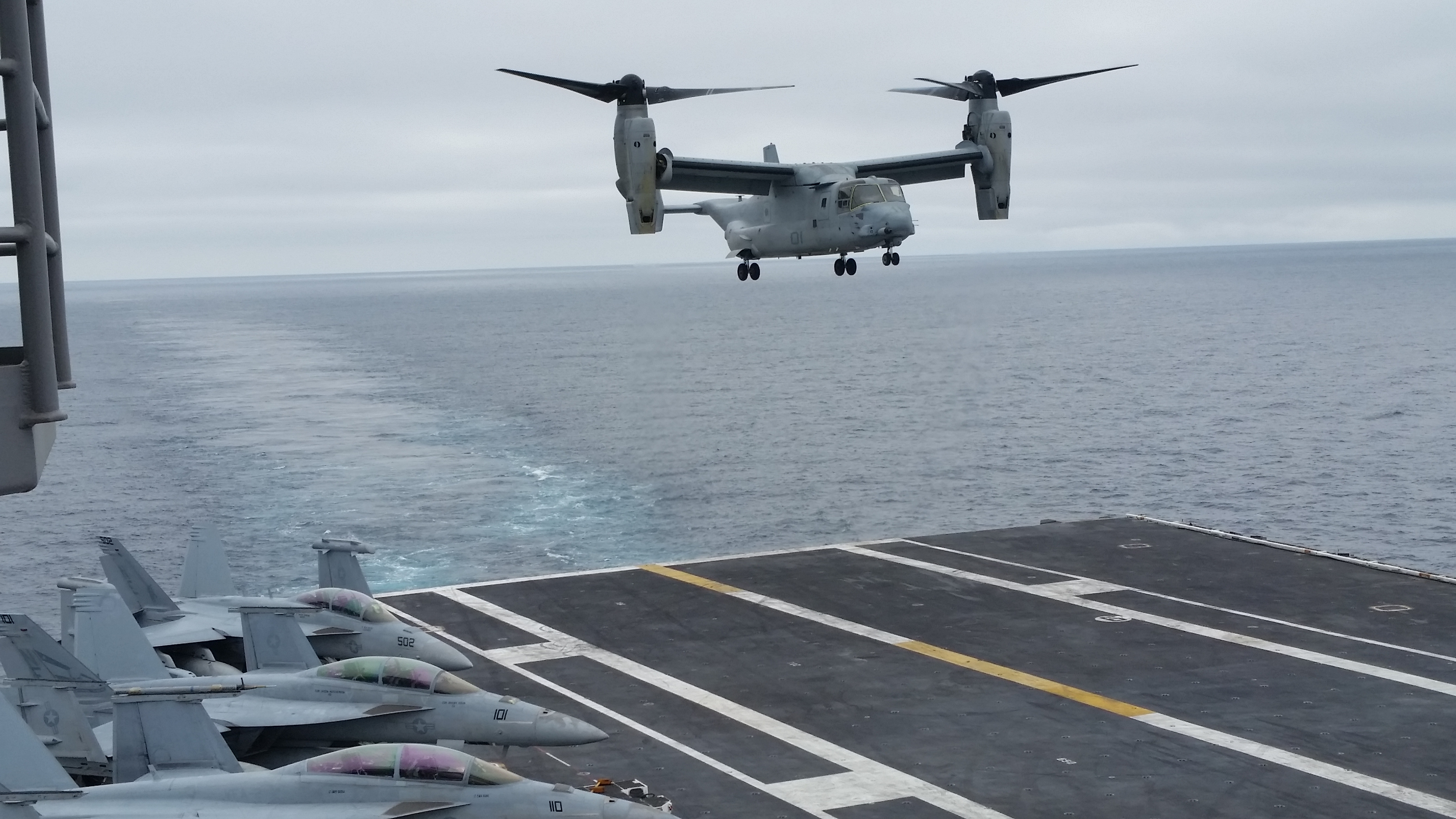
Using the MV-22 Osprey as the basis for the Navy’s new Carrier On-Board Delivery (COD) is poised to add significant operational flexibility and reduce flight deck manpower requirements, the Navy’s Air Boss said today.
Commander of Naval Air Forces Vice Adm. Mike Shoemaker said a recent Fleet Battle Experiment to begin integrating the V-22 tiltrotor into fixed wing cyclic operations on an aircraft carrier went very well.
In January 2015 the Navy chose to replace its decades-old C-2 Greyhound with a version of the Osprey dubbed the CMV-22B – which will be the Marine Corps’ Osprey, plus an extended range fuel tank, long-range communications and a public address system for passengers in the back. The decision raised several concerns about the cargo-carrying capacity of the Osprey, the range and altitude at which the tiltrotor could fly, and how a vertical-landing aircraft replacing a fixed-wing plane would affect flight deck operations.
Shoemaker, speaking at an event cohosted by the Center for Strategic and International Studies and the U.S. Naval Institute, said there is no reason for concern.
By the end of the experiment, the crew of USS Carl Vinson (CVN-70) had figured out how to land and unload the Osprey in about 20 minutes for passenger delivery missions and about 30 minutes for cargo delivery missions. That fits within the flight deck’s natural cycle, in which the plane might launch a number of aircraft at once, and recover a number of aircraft perhaps an hour or more later.
More than just being able to land and unload the cargo quickly, Shoemaker said using the V-22 instead of the C-2 greatly reduced the manpower burden on the ship. Because the Osprey lands and takes off like a helicopter instead of requiring the steam catapult launcher and the arrested landing gear like a fixed-wing plane, “it takes about six folks to launch and recover an Osprey. It would take about 40 or so to man up the ship to bring in the (current) COD. So that’s some unique operating benefits that I think come with the Osprey.”
Additionally, the Osprey can land on the aircraft carrier at night whereas the C-2 does not perform nighttime carrier landings. So the V-22 could land day or night, and even on days when the rest of the airwing is not flying and therefore the catapult and arresting gear isn’t running.
Shoemaker acknowledged that the inside of the V-22 is slightly smaller than the C-2, meaning the plane can deliver a bit less cargo or a couple fewer people, “but I think the way you do the reconfiguring of seats inside the Osprey gives you some opportunity to do passenger/cargo mix and quickly reconfigure in a way we didn’t have with the C-2.
“I think when we put in the extended range package that will be part of the CMV-22, it will be at C-2 range, comparable to that or even actually beyond, around 1,100-plus miles for legs,” the Air Boss added.
In total, “although we gave up a little bit in people and cargo, I think the flexibility the Osprey brings will be good,” he said.





